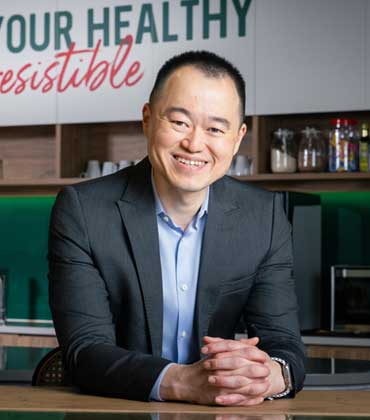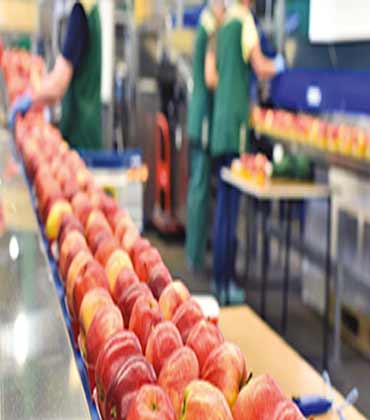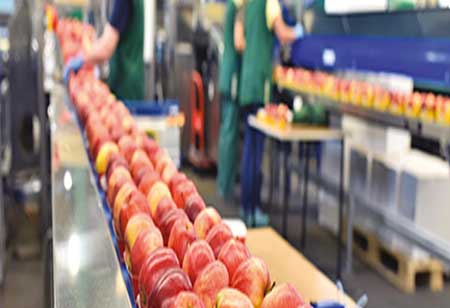THANK YOU FOR SUBSCRIBING
By Kantapat Jaruprompong, Farm System and Poultry Welfare Manager, Tyson Foods
Organic Fertilizer and Precision Farming
By Noeleen Donegan, Chief Operating Officer, Kerry
Tackling Food Safety and Waste in Plantbased Meat...
By Jiunn Shih, Chief Marketing, Innovation & Sustainability Officer, Zespri International
Cultivating A Sustainable Future Through Collaboration
By Robert Erhard, Head of Dairy, Corporate Sustainable Agricultural Development, Nestle
Transforming the Food Industry Through a Sustainable...

Embracing New Technologies in Shrimp Farming
Txomin Azpeitia, Group Technical Manager, Grobest Group

 Txomin Azpeitia, Group Technical Manager, Grobest Group
Txomin Azpeitia, Group Technical Manager, Grobest GroupThe global shrimp farming industry navigates a turbulent sea. Soaring production costs, sluggish farm-gate prices, and disease outbreaks are squeezing margins for producers. Yet, amidst these challenges, a wave of innovative digital solutions emerges, offering a lifeline for shrimp farmers seeking efficiency, profitability, and sustainability. These solutions leverage cutting-edge technologies like IoT sensors and AIpowered analytics to transform farm operations.
Stock Management
• Mobile applications, often in conjunction with illuminated trays or cages, leveraging computer vision, enable accurate counting of post-larvae, juveniles, and/or adults, with accuracies over 95 percent. Most advanced applications enable accurate sizing, providing insights into post-larval quality. Early-stage feeding programs are optimized to reduce overfeeding and ease regular growth monitoring.
• The ongoing validation of sonar technology for pond biomass estimation has the potential to optimize feeding efficiency and its costs, as well as enable accurate harvest planification.
Environmental Monitoring
• Real-time monitoring of major water quality parameters, such as temperature and dissolved oxygen, through mobile applications or web platforms, allows remote pond management and data analysis.
• Integration of sensor readings with pond hardware such as paddle wheels, autofeeders, and pumps is a widespread feature enabling automated responses based on user-defined parameters that facilitate operation, maintaining a stable environment, with often significant cost savings.
• Most recent advances in satellite imagery analysis through artificial intelligence cut reliance on physical sensors deployed in a pond and provide accurate estimation of individual pond water quality.
Feeding Management
• Previously mentioned web platforms connecting water quality sensors with automatic feeders enable controlling their operation based on water temperature and dissolved oxygen readings, minimizing feed wastage and optimizing conversion.
• However, the most significant advance occurred with intelligent systems that convert underwater hydrophone readings into signals of shrimp feeding response, facilitating accurate feeding management with the potential of cost efficiency.
Health Management
• External shrimp morphology and behavior tracked through mobile applications or web platforms provide insights into stress and disease risk, enabling corrective action implementation.
• A different approach leverages machine learning power to analyze large datasets of microbial readings in pond water to monitor the distribution of dominant groups and changes in this distribution as predictors of disease outbreaks.
Online Marketplaces
• Web platform features include marketplaces allowing farmers direct access to input retailers offering feed, post larvae, animal health products, and hardware at an often discounted price.
• On the opposite end, connect farmers with brokers, allowing a competitive transaction, bypassing middlemen, and maximizing profits.
• Credits.
"New generations of farmers embrace digital tools, recognizing their potential"
However, the widespread adoption of the mentioned digital technologies faces hurdles. Dominated by small-scale producers with limited resources, the Asian shrimp farming industry presents unique challenges. Early business models may not have adequately addressed affordability concerns, leading to a disconnect between product cost and perceived value. Unrealistic expectations surrounding immediate benefits can also discourage engagement.
Despite these challenges, a wave of optimism is washing over the industry. New generations of farmers embrace digital tools, recognizing their potential. As solutions become more affordable and user-friendly, their integration into shrimp farming practices will become increasingly seamless, driving positive change and enhancing the industry's future.
Read Also














